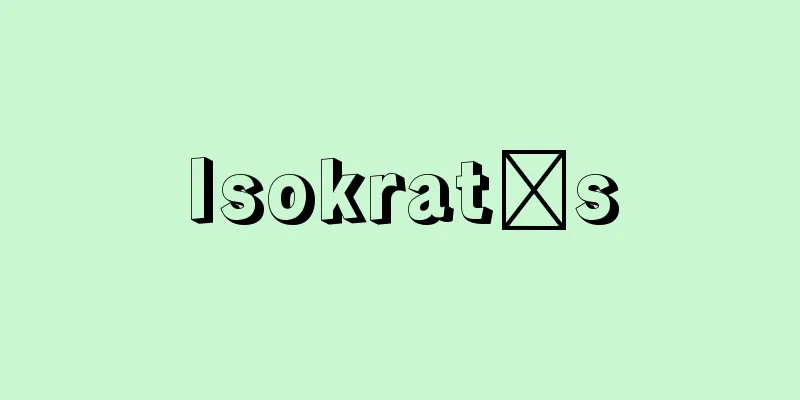Sarasa - Sarasa

|
It is also written as Sarasa, Sarasha, Sarasa, and Saraza, and is also known as Shamurozome, Kafu, and Inkafu. In particular, those decorated with gold leaf or gold paint are called Kinkafu or Kin Sarasa. A general term for foreign patterned fabrics imported from the early modern period, referring mainly to cotton fabrics with hand-painted or stencil-dyed patterns. Most are made in India or Java, but it also includes fabrics from Thailand, Sumatra, Celebes, China, Iran and Europe. Imitations made in Japan are specifically called "Japanese sarasa." The word "sarasa" is a dyeing term used only in Japan today, and in English, Indian sarasa is called chintz, Javanese sarasa is called batik, and European sarasa is called printed cotton. However, "sarasa" is thought to have actually been an imported word, and as for its origin, it is said to be a corruption of Surat, which was a key port on the west coast of India at the time ("Komo Zatsuwa"), or that it comes from the Javanese word srasah, the Portuguese words sarassa and saraçs, or the Spanish word saraza, but there is no solid evidence for any of these, and today the most supported theory is that India, which has been the oldest exporter of chintz overseas, originally used the words saraso and sarasses, which referred to the finest, colorful cotton cloth, at the end of the 16th century ("Nature Guide to the Marco Polo" by Linschoten), and was then directly imported to Japan. [Ogasawara Sae] Indian ChintzIndian chintz has the oldest history compared to other countries, and it is known that it was already being exported to the Mediterranean region as far away as around the time of Christ. However, the majority of the remains date from the 17th century onwards, particularly the 18th and 19th centuries, and of the earlier items, the chintz from around the 15th century discovered in Fostat in Old Cairo, south of Cairo, can be considered relatively old. The technical characteristics of Indian chintz are the combination of pre-mordant dyeing (where a pattern is drawn with a mordant before the fabric is immersed in the dye) and wax-resist dyeing; when hand-drawn, the mordant and wax are applied to the fabric using a special pen called a kalam, and when molded, a wooden mold. The main dyes used are Indian madder and indigo, with black, light green, and yellow added. Many of them were made as interior decorations, such as drapes for temples and tents, and bed covers. Patterns vary widely depending on the region where they are made, from religious themes such as the god Krishna and other Hindu gods, the Ramayana, and the goddess Mata, to large standing trees, birds and animals, people, flowers and birds, and geometric patterns. [Ogasawara Sae] Javanese batikIt is a pattern-dyed cloth mainly using wax resist dyeing, which is considered to be on a par with Indian chintz. Hand-painted chintz is characterized by the wax-laying technique using a special tool called tjanting. The dye used in the very early days was only indigo on a white background, but after the 17th century, soga dye was added, and the so-called kaing soga, which is an indigo and brown color tone, became mainstream. Bright madder-colored cloth developed in the northern cities of Java in the 18th century. Around this time, batik was also made on silk instead of cotton. In the second half of the 19th century, the development of the wax-laying technique using a mold called tjap, as opposed to hand-painted cloth, and the use of chemical dyes began, which caused a major transformation in Java chintz. There are excellent cloths made for clothing, such as dodo (formal wrap), sarong (loincloth), and kaing kapala (headcloth). The patterns are uniquely stylized, with over 1,000 to 2,000 motifs that are combined in various ways to create a wide variety of patterns. Some of the motifs are related to Indonesian decorative patterns from ancient times, while others show influences from India, China, and Europe. Particularly classical designs include the "Parang Rusak" which represents a continuous spiral pattern, the "Undaliris" which has a diagonal stripe structure with different patterns on each stripe, and the "Kaung" pattern which has a ring-shaped, cross-shaped, and Shippo-tsunagi pattern structure, but these were prohibited patterns used only by the nobility until the early 20th century. [Ogasawara Sae] European ChintzEuropean pattern dyeing developed rapidly, inspired by the beauty of Indian chintz, which began to be imported around the 17th century, and in the early days, it began by imitating Indian chintz in both patterns and techniques. However, it developed dramatically from the late 17th century to the 18th century, and in England, woodblock printing was put to practical use by William Sherwin of London in 1676, in Switzerland, chintz workshops were established in Zurich and Geneva in the early 18th century, and in France, a Jouy printing factory was established by Christophe Philippe Oberkampf in 1760. In particular, the introduction of copperplate printing in the mid-18th century, followed by the completion of mechanical roller printing by Thomas Bell of Scotland in 1783, and the development of chemical dyes in the 19th century led to the mass production of European chintz, which was then exported in large quantities to America and other parts of the world. The chintz known in Japan as copperplate chintz or Oberkampf was produced during the 18th and 19th centuries. [Ogasawara Sae] Furuwata Sarasa and Japanese SarasaToday, the highly valued chintzes known as Kowatari chintzes were imported to Japan in the 17th and 18th centuries, most of which were made in India. The chintzes featured in these chintzes include flowers, trees, birds, animals, and people, as well as designs in styles that are completely different from those of the Indian chintzes exported to Europe. For example, the chintzes handed down by the Ii family of the former Hikone domain, as well as the Kowatari chintzes found on tea caddy covers and rag curtains, contain designs that strongly reflect Japanese tastes, such as fans, incense bags, comma shaped Japanese flags, crests, ginkgo trees, and geometric patterns known as coffered ceilings. In recent years, a large number of chintzes with designs very similar to those imported to Japan have been discovered among the Toraja people of Sulawesi, Indonesia. Some of these textiles bear the mark of the Dutch East India Company, which suggests that India at the time consciously produced chintz for export to Japan, China, and Southeast Asia. These Furuwatari chintz designs were published and circulated in the late Edo period in the form of the "Sarasa Benran" (1778), "Augmented Kafu Benran" (1781), and "Sarasa Zufu" (1785), and became models for the production of so-called imitation chintz. Inspired by these travelling chintz, Japanese chintz began to be produced in various regions, making use of its exotic patterns, and names such as Sakai chintz and Nagasaki chintz remain. Generally, dye is rubbed onto cloth using a stencil, or paste is applied using a stencil as in stencil dyeing, and then the fabric is dyed using a drawstring, and its uses were limited to underwear, bodysuits, futon covers, furoshiki wrapping cloths, etc. Among these, only Nabeshima chintz made by the Nabeshima clan was painstakingly dyed using a wooden stencil for the outline of the pattern and multiple stencils for the other parts, giving it the air of a clan purveyor or custom-made item. [Ogasawara Sae] Source: Shogakukan Encyclopedia Nipponica About Encyclopedia Nipponica Information | Legend |
|
佐羅紗、沙羅沙、皿紗、佐良左とも記し、別名紗羅染(しゃむろぞめ)、華布(かふ)、印華布(いんかふ)という。とくに金箔(きんぱく)・金泥を施したものを金華布・金更紗と呼称する。 近世初頭より舶載された外国の模様染め布の総称で、主として木綿に手描き、あるいは型を用いて模様を染めたものをさす。インド、ジャワ製のものが多いが、タイ、スマトラ、セレベス、中国、イラン、ヨーロッパ製のものも含まれる。わが国で模倣製作されたものは、とくに「和更紗」とよぶ。「さらさ」の語は、今日日本だけで用いられている染色用語で、英語ではインド更紗にはチンツchintz、ジャワ更紗にはバティックbatik、ヨーロッパの更紗にはprinted cottonの名があてられている。しかし本来「さらさ」は輸入語と考えられ、その語源については、当時インド西海岸の要港であったスラートSulatが転訛(てんか)したものである(『紅毛雑話』)とも、ジャワ語のsrasah、ポルトガル語のsarassa, saraçs、スペイン語のsarazaなどからきたともいわれているが、いずれも確かな証拠はなく、今日では、もっとも古くから更紗を国外に輸出したインドで、16世紀末に極上の多彩な木綿布をさしたsaraso, sarassesの語(リンスホーテン著『東方案内記』)が、わが国に直接輸入されたとする説が支持されている。 [小笠原小枝] インド更紗(チンツ)インドの更紗は、他国に比べてもっとも古い歴史を有し、すでに紀元前後には遠く地中海地方に輸出されていたことが知られている。しかし遺品のうえでは17世紀以降、とくに18~19世紀のものがもっとも多く、それ以前のものではカイロの南部、オールド・カイロにあるフォスタットより発見された15世紀前後の更紗類が比較的古い資料といえる。 インド更紗の技術的な特色は、先媒染(さきばいせん)(染料に浸(つ)ける前に、媒染剤で文様を描く)と蝋(ろう)防染とが併用されることで、手描きの場合はカラムkalamとよばれる特殊なペンによって、型の場合は木型によって、媒染剤や蝋が布に置かれる。染料はインド茜(あかね)と藍(あい)が主体で、それに黒や萌黄(もえぎ)、黄色の彩りが加えられる。用途は寺院やテント用の掛け布、ベッドカバーなど室内装飾布としてつくられたものが多い。模様はクリシュナ神をはじめヒンドゥー教の神々やラーマーヤナ物語、マタ女神などを主題とした宗教的なものから、大柄な立ち木、鳥獣、人物、花鳥や幾何学的な模様など、製作された地域により、それぞれに特色のある多様なものがつくられている。 [小笠原小枝] ジャワ更紗(バティック)インド更紗に並び称される蝋防染を主体とした模様染め布で、手描きのものはチャンチンtjantingという特殊な工具を使って蝋置きするのを特色とする。染料はごく初期のものは白地に藍のみであったが、17世紀以降にソガ染料が加わり、いわゆるカイン・ソガとよばれる藍と茶褐色の色調のものが主流となる。茜系の華やかな色彩のものは18世紀に入ってジャワの北部の都市から発達していった。またこのころに木綿ではなく絹地のバティックもつくられている。19世紀後半には、手描きに対し、チャップtjapとよぶ型による蝋置きの技術が発達し、加えて化学染料の使用が始まることによって、ジャワ更紗は大きく変貌(へんぼう)してきた。ドド(礼装用巻衣(まきい))、サロン(腰衣)、カイン・カパラ(頭布(ずきん))など、服飾用布として製作されたものに優れたものがある。 文様は独特に様式化されており、1000から2000種を超えるモチーフがさまざまに組み合わされて、各種の文様がつくりだされる。モチーフには、非常に古くからインドネシアにある装飾文様に関連づけられるもののほか、インドや中国、あるいはヨーロッパの影響を示すものもある。とくに古典的な意匠としては、螺旋(らせん)風の連続文様を表す「パラン・ルサク」や、斜め縞(じま)の構成に一縞ずつ異なる文様を配した「ウンダリリス」、輪繋(つな)ぎ、輪違い、七宝(しっぽう)繋ぎの構成をもつ「カウン」文様などがあるが、これらは20世紀初頭まで貴族のみに用いられる禁制の文様であった。 [小笠原小枝] ヨーロッパの更紗ヨーロッパの模様染めは、17世紀前後に輸入され始めたインド更紗の美しさに触発されて急激に発達したもので、初期においては、文様も技法もインド更紗を模倣することから始められた。しかし17世紀後半から18世紀にかけて飛躍的に発達し、イギリスでは1676年にロンドンのウィリアム・シャーウィンによって、木版によるプリントが実用化され、18世紀初期スイスではチューリヒ、ジュネーブに更紗工房が設立され、そしてフランスでは、1760年にクリストフ・P・オーベルカンプChristophe Philippe Oberkampfによってジュイの捺染(なっせん)工場が設立された。とくに18世紀中葉における銅版の導入、続いて1783年スコットランドのトマス・ベルによる機械的なローラー・プリントの完成、19世紀の化学染料の開発は、ヨーロッパの更紗を量産へと向かわせ、アメリカその他の世界に大量に輸出されることになった。わが国で銅版更紗あるいはオーベルカンプとよばれている更紗は、こうした18~19世紀にかけてつくられたものである。 [小笠原小枝] 古渡更紗と和更紗今日古渡(こわたり)更紗といって珍重される更紗類は、17~18世紀にかけて日本に舶載されたもので、その大半はインド製のものであるが、これらの更紗文様には、花卉(かき)、花樹、鳥獣、人物などのほか、ヨーロッパに輸出されたインド更紗とはまったく異なる意匠スタイルのものが含まれていることが特色といえる。たとえば旧彦根(ひこね)藩井伊家伝来の更紗類、および茶入れの仕覆(しふく)や裂帳(きれちょう)にみる古渡更紗には、扇、香袋、巴(ともえ)、紋尽(もんづくし)、銀杏(いちょう)、そのほか格天井(ごうてんじょう)とよばれる幾何学文様など、日本人の好みを強く反映した文様が認められる。近年、こうした日本に伝来する古渡更紗にきわめてよく似た文様の更紗がインドネシアのスラウェシ島のトラジャ人の間から多数発見された。そのなかにはオランダ東インド会社のマークを捺印したものもあることから、当時インドで、日本や中国、東南アジア向けの輸出用更紗が意識的に製作されていたことが想像される。これらの古渡更紗のデザインは江戸時代後期、『佐羅紗便覧』(1778)、『増補華布便覧』(1781)、『更紗図譜』(1785)となって発刊、流布し、いわゆる模倣更紗の製作の手本となった。 和更紗は、こうした渡り物の更紗に刺激されて、その異国的な模様を生かして各地で製作され始めたもので、堺(さかい)更紗や長崎更紗などの名が残っている。一般に型紙を用いて裂地に染料を摺(す)ったり、型染めと同じく型紙を用いて糊(のり)を置き、その後、引染(ひきぞ)めしたもので、用途は下着や胴服、ふとん表、風呂敷(ふろしき)などに限られていた。そのなかで鍋島(なべしま)藩でつくられた鍋島更紗のみは、模様の輪郭に木型を、その他の部分は、型紙を幾枚も用いて丹念に染め上げたもので、藩の御用達(ごようたし)や注文品としての風格を備えたものであった。 [小笠原小枝] 出典 小学館 日本大百科全書(ニッポニカ)日本大百科全書(ニッポニカ)について 情報 | 凡例 |
<<: Sarasa shrimp (English name: Rhynchocinetes uritai)
>>: Zaragoza - Saragoza (English spelling)
Recommend
Zeng Pu (English spelling)
[Birth] Douji 11 (1872) [Died] 1935 China's fi...
《Amaryllis》 - Too Beautiful
…Italian composer and singer. He was one of the p...
Dokai - Sea of Kuki
The ancient name of Dokai Bay. *The Chronicles ( 7...
Wallis, S.
The inhabitants are Polynesians, who practice sub...
Torch Relay - Seikarire
It is one of the events of the Olympic opening ce...
Cryptochaetum grandicorne (English spelling)
…It does not refer to a specific insect, but is a...
Lion - Lion (English spelling) lion
It is a member of the Felidae family of the Carni...
Wholesaler - Toiyaba
A facility that managed the transfer of horses and...
Johirakura - Johirakura
A warehouse for storing grain was established dur...
Toyochika Takamura
A metal caster, he was born in Shita-ya, Tokyo, a...
Tiruchi
…A religious city in the central part of Tamil Na...
Mitsui Fudosan Co., Ltd.
The top real estate company. One of the Mitsui Big...
Abhidharma Buddhism
...In Sanskrit, it is called Hinayana (meaning &q...
Bruno - Giordano Bruno
Italian Renaissance philosopher. Born in Nola, ne...
Fushikaden - Fushikaden
This is a treatise on Noh by Zeami, the master of...









